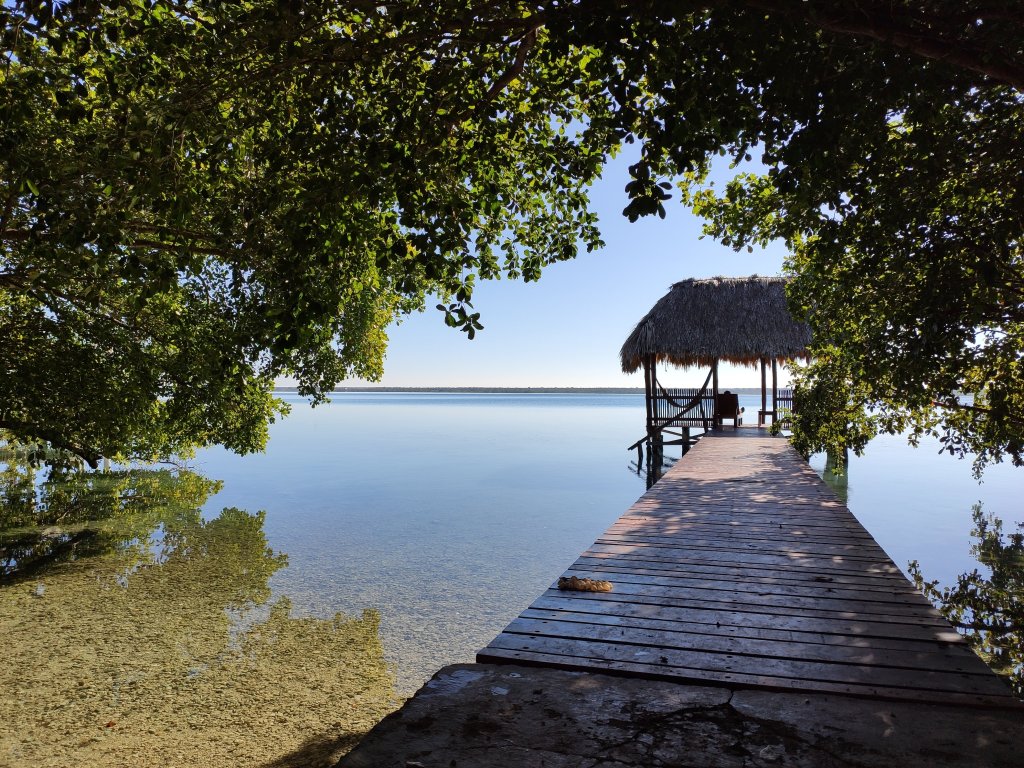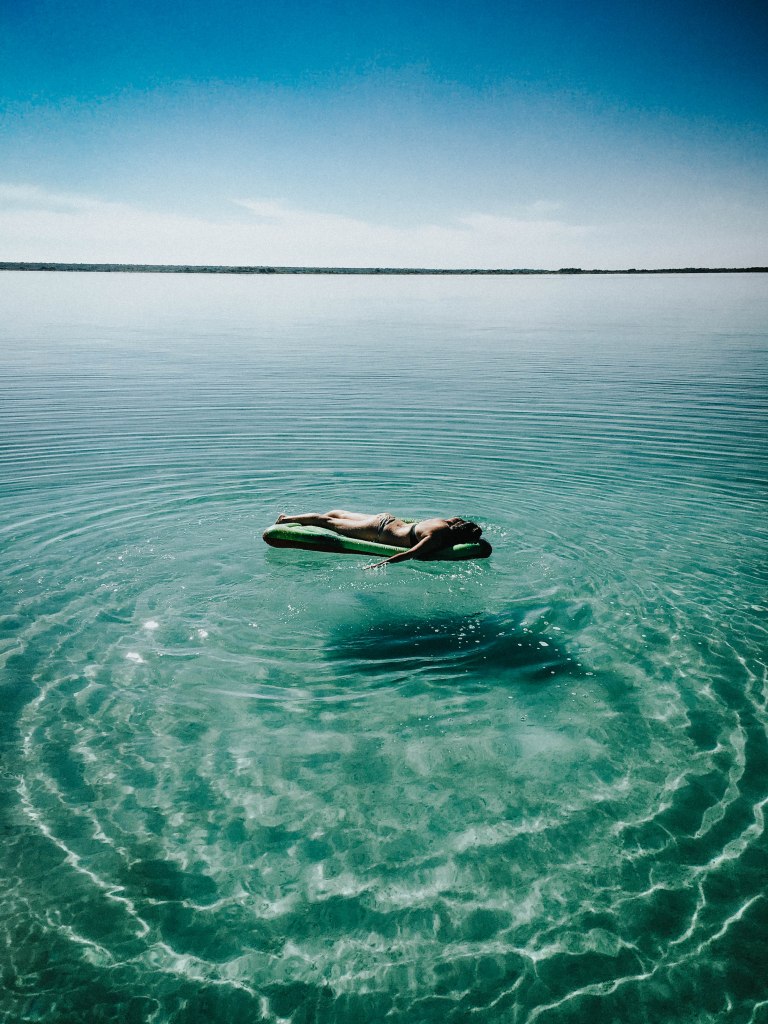Responsible tourism is a tricky concept to get your head around. I’ve written here before about travelling to places that fly under the radar and get described as ‘hidden gems’, and about visiting places that are genuinely at the end of the world. I’ve also been lucky enough while wandering around Mexico to visit some places that are truly photo worthy and a bit Instagram famous, but remain, for the moment, remote enough to be quiet and unspoilt. But knowing what we want in a travel destination is not always easy – the genuinely undiscovered places present challenges that we aren’t necessarily used to dealing with, and by the time you are reading about the latest hidden paradise, chances are it is not so hidden anymore.

I was sitting at breakfast in a small eco-lodge on the banks of Lake Bacalar, way down in the south of Quintana Roo and just a few miles away from being in Belize, when the email arrived. The New York Times weekly travel bulletin, with the headline: “Bacalar: Is this the next Tulum?” After having cursed myself for not already having written the exact same article, I thanked my lucky stars that we had managed to come here before this doom-laden prophecy had come to pass.

Unlike the rest of the Riviera Maya, Bacalar remains charming, beautiful and relatively undiscovered, by foreign tourists at least. Despite being only half an hour from Chetumal airport (a fact missed by the NYT, I should add, who referred to it as being only 4 hours drive from Cancun!), it isn’t quite on the tourist trail. Without the quintessential golden sands and warm Caribbean waters that epitomise the rest of Quintana Roo, it does not draw the crowds that Cancun, Playa del Carmen, Akumal and Tulum do. Which is both wonderful, and a shame, because it is absolutely stunning.

Bacalar town has a pretty amazing history for a small holiday spot. A pre-Columbian Mayan city, it was the first town in the region to be captured by the Spanish in the 16th century. Troubled by pirates throughout the 17th century, as both the lagoon and the dark campeche forests of what is now Belize were popular hiding places for buccaneers and professional thieves, it was fortified in the early 18th century. Later it was one of the strongholds of the Chan Santa Cruz Maya during the Yucatan Caste War, and remained in their hands for over 50 years, only becoming officially Mexican in 1902. This rather exciting if deeply traumatic past has left Bacalar with an air of mystery, or piratical glamour, which I’ve not really encountered anywhere else in Mexico.

The main draw of Bacalar however is the lake. Nicknamed ‘the lagoon of the seven colours’, it comes as somewhat of a surprise, shimmering out of the jungle in a flourish of blues, greens, greys and whites that defy you to improve upon with an Instagram filter. The chalk basin ensures that the water is crystal clear and delightfully warm, while the iconic long pontoons that stretch out into the lagoon are as picturesque as anything Bali or Tahiti have to offer. The lake is flat calm and almost devoid of fish, which makes it a pleasing alternative for more nervous swimmers to the waves and marine life of the Caribbean. Lacking fish, it boasts a far more fascinating and mysterious population in the form of stromatolites. Literally living rocks, they are the oldest form of life on the planet, peaking in population about 1.25 billion years ago. They are, it has to be said, somewhat anticlimactic to look at, as they are to all intents and purposes, rocks. But it is still pretty damn exciting to think that you are looking at living creatures that might have been nibbled on by brachiosaurus…

Bacalar is well on its way to being ‘discovered’, as the aforementioned New York Times article indicated, and is already feeling the effects. Even now, the town doesn’t really have the infrastructure to deal with the number of tourists and the rate of development it currently experiences. Although most of the land around the lake is supposedly Ejido, communally-held land owned only by Mexicans, various work-arounds have been found for the many hotels and resorts that have sprung up. In fact, as we boated around the lake one afternoon, we saw brush fires that supposedly had been started to drive out occupants and ensure that the land was only fit for development. There is no sewer system, and waste flows straight into the lake – ok when the community is small, but with every new hotel and restaurant the damage to this fragile ecosystem becomes more serious.

Bacalar’s struggles to incorporate greater levels of tourism are only likely to get worse in the near future. The town is one of the main stops on President Lopez Obrador’s grand Tren Maya project, a remarkable piece of infrastructure which will connect Tabasco, Campeche, Chiapas, Yucatan and Campeche by train, and link the various tourist hotspots of the peninsula together. While the idea of bringing passenger trains back to Mexico is a good one, the knock-on effects of this project are likely to have disastrous ramifications across the region. Cancun-ification is already an issue, with development and growth in places like Playa del Carmen, Akumal and Tulum turning unspoiled natural landscapes into private beaches and ‘zonas hoteleras’. For visitors these spots might mean beautiful beaches and New Age ecotourism, but for locals it means exploitation, inequality and narco-related paramilitary violence, not to mention ecological collapse.

In Bacalar, without the underlying infrastructure to support it, the arrival of the Tren Maya could have a huge, negative impact on the town, and more importantly on the fragile ecosystem of the lagoon and its ancient stromatolites. More hotels, more people, more sewage, and soon the seven colours of this remarkable lake will merge into one dull, dead mass. Permanent populations of remote towns like Bacalar and Calakmul are expected to double, while tourist numbers could skyrocket, without the structures and systems in place to accommodate them. Perhaps most worryingly, the plans are currently riding roughshod over the objections of local Maya communities, as well as over their lands.

I don’t really know what the answer here is. The Riviera Maya and most of the Yucatan Peninsula is dependent on tourism to survive, and so to deny other communities the opportunity to access the benefits that increasing visitor numbers could bring seems harsh and ridiculous. But are the benefits of tourism so clear cut, if violence, inequality, exploitation and environmental damage are some of the results? Do the ruins of Calakmul and the Biosphere Reserve of Sian Ka’an need to stay remote in order to sustain themselves, thereby essentially removing themselves as destinations from all but the most luxurious of travel itineraries? Is sustainable tourism completely at odds with accessible tourism?

What I do know is that just building new hotels and new train lines is definitely not the answer. It seems to me that building up communities and improving infrastructure is a far more sustainable way of bringing tourism to delicate areas. As the world adapts to a new, post-Covid style of tourism the more remote places in the world may well become far more important for their very remoteness, and accessibility will take a back seat.
